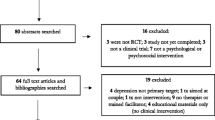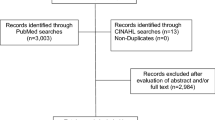Abstract
Objectives: This study examines smoking and smoking cessation behaviors among U.S. pregnant women and seeks to identify the sociodemographic correlates of smoking cessation in pregnancy. Methods: The 1998 NHIS Pregnancy and Smoking supplement was analyzed, including 5288 U.S. women (weighted to represent 13,714,358 women) who gave birth to a live-born infant in the past 5 years. Four categories of smoking behavior were analyzed: nonsmoking at last pregnancy, persistent smoking throughout pregnancy, attempting unsuccessfully to quit during pregnancy, and successfully quitting during pregnancy. Logistic regression was used to isolate risk factors for each of the smoking behaviors and to examine factors associated with attempted and successful cessation. Results: The women most likely to attempt to quit smoking in pregnancy were Hispanic women (OR = 3.09) and women who have smoked for less than 10 years (OR = 2.75 for women aged 18–24.) In general, for the groups at highest risk of smoking at the start of pregnancy, the odds of being a persistent smoker were higher than the odds of being an unsuccessful quitter, which in turn were higher than the odds of quitting successfully. The factors associated with attempts to quit included Hispanic ethnicity, higher education, above-poverty income, and shorter duration of smoking, while the combined effect of age and smoking duration was the only one significantly associated with successful quitting. In every age group, longer smoking duration was associated with lower likelihood of attempting to quit as well as successful quitting. Conclusions: The factors most strongly associated with attempts to quit smoking were Hispanic ethnicity and the combined effect of age and smoking duration. Future smoking cessation and relapse prevention programs should be developed, taking into consideration the critical factors of age, ethnicity, income, geography, and addiction.
Similar content being viewed by others
REFERENCES
U.S. Department of Health and Human Services. Women and smoking. A report of the Surgeon General. Washington, DC: U.S. Department of Health and Human Services, Public Health Service, Centers for Disease Control and Prevention, National Center for Chronic Disease Prevention and Health Promotion, Office on Smoking and Health, 2001.
Institute of Medicine, Committee to Study the Prevention of Low Birthweight. Preventing low birthweight. Washington, DC: National Academy Press, 1985.
Shiono PH, Behrman RE. Low birth weight: Analysis and recommendations. Future Child 1995;5(1):4–18.
Chomitz VR, Cheung LWY, Lieberman E. The role of lifestyle in preventing low birth weight. Future Child 1995;5(1):121–38.
Kramer MS. Determinants of low birth weight: Methodological assessment and meta-analysis. Bull World Health Organ 1987;65(5):663–737.
McCormick MC, Brooks-Gunn J, Shorter T, Holmes JH, Wallace CY, Heagarty MC. Factors associated with smoking in low-income pregnant women: Relationship to birth weight, stressful life events, social support, health behaviors and mental distress. J Clin Epidemiol 1990;43(5):441–8.
Shah NR, Bracken MB. Asystematic review and meta-analysis of prospective studies on the association between maternal cigarette smoking and preterm delivery. Am J Obstet Gynecol 2000;182(2):465–72.
DiFranza JR, Lew RA. Effect of maternal cigarette smoking on pregnancy complications and sudden infant death syndrome. J Fam Pract 1995;40(4):385–94.
Malloy MH, Kleinman JC, Land GH, Schramm WF. The association of maternal smoking with age and cause of infant death. Am J Epidemiol 1988;128(1):46–55.
Castles A, Adams EK, Melvin CL, Kelsch C, Boulton ML. Effects of smoking during pregnancy: Five meta-analyses. Am J Prev Med 1999;16(3):208–15.
Chung KC, Kowalski CP, Kim HM, Buchman SR. Maternal cigarette smoking during pregnancy and the risk of having a child with cleft lip/palate. Plast Reconstr Surg 2000;105(2):485–91.
Pollack HA. Sudden infant death syndrome, maternal smoking during pregnancy, and the cost-effectiveness of smoking cessation intervention. Am J Public Health 2001;91(3):432–6.
Meyer MB, Jonas BS, Tonascia JA. Perinatal events associated with maternal smoking during pregnancy. AmJ Epidemiol 1976;103(5):464–76.
Sexton M, Hebel JR. A clinical trial of change in maternal smoking and its effect on birth weight. JAMA 1984;251(7):911–5.
U.S. Public Health Service. Healthy people 2010: Objectives for improving health-conference edition. Washington, DC: US Department of Health and Human Services, Public Health Service, 2000.
England LJ, Kencirck JS, Wilson HG, Merritt RK, Gargiullo PM, Zahniser SC. Effects of smoking reduction during pregnancy on the birth weight of term infants. Am J Epidemiol 2001;154(8):694–701.
Lindqvist R, Aberg H. Who stops smoking during pregnancy? Acta Obstet Gynecol Scand 2001;80(2):137–41.
Pollack KI, McBride CM, Curry SJ, Lando H, Pirie PL, Grothaus LC. Women's perceived and partners' reported support for smoking cessation during pregnancy. Ann Behav Med 2001;23(3):208–14.
Curry SJ, McBride C, Grothaus L, Lando H, Pirie P. Motivation for smoking cessation among pregnant women. Psychol Addict Behav 2001;15(2):126–32.
Centers for Disease Control and Prevention. Cigarette smoking among adults-United States, 1998. Morbidity Mortality Wkly Rep 2000;49(39):881–4.
Mathews, TJ. Smoking during pregnancy in the 1990s. NatlVital Stat Rep 2001;49(7).
Ebrahim SH, Floyd RL, Merritt RK, Decoufle P, Holtzman D. Trends in pregnancy-related smoking rates in the United States, 1987–1996. JAMA 2000;283(3):361–6.
Dietz PM, Adams MM, Kendrick JS, Mathis MP. Completeness of ascertainment of prenatal smoking using birth certificates and confidential questionnaires: Variations by maternal attributes and infant birth weight. Am J Epidemiol 1998;148:1048–54.
Kharazzi M, Epstein D, Hopkins B, Kretuzer R, Doebbert G, Hiatt R, Swan S, Eskenazi B, Pirkle JL, Bernert JT. Evauation of four maternal smoking questions. Public Health Rep 1999;113:60–70.
Ventura SJ. Using the birth certificate to monitor smoking during pregnancy. Public Health Rep 1999;114:71–3.
SAS Institute, Inc., Version 8, Cary, NC.
Shah BV, Barnwell BG, Bieler GS. SUDAAN User's Manual Release 7.5. Research Triangle Park, NC: Research Triangle Institute, 1997.
Winkleby MA, Schooler C, Kraemer HC, Lin J, Fortmann SP. Hispanic versus white smoking patterns by sex and level of education. Am J Epidemiol 1995;142(4):410–8.
Siegel D, Faigeles B. Smoking and scioeconomic status in a population-based inner city sample of African-Americans, Latinos, and whites. J Cardiovasc Risk 1996;3(3):295–300.
Perez-Stable EJ, Ramirez A, Villareal R, Talavera GA, Trapido E, Suarez L, Marti J, McAlister A. Cigarette smoking behavior among US Latino men and women from different countries of origin. Am J Public Health 2001;91(9):1423–30.
Pletsch PK, Johnson MK. The cigarette smoking experience of pregnant Latinas in the United States. Health Care Women Int 1996;17(6):549–62.
Hatziandreu EJ, Pierce JP, Fiore MC, Grise V, Novotny TE, Davis RM. The reliability of self-reported cigarette consumption in the United States. Am J Public Health 1989;79:1020–3.
Treating tobacco use and dependence. Rockville, MD: Public Health Service; 2000. Clinical Practice Guideline.
Valanis B, Lichtenstein E, Mullooly JP, Labuhn K, Brody K, Severson HH, Stevens N. Maternal smoking cessation and relapse prevention during health care visits. Am J Prev Med 2001;20(10):1–8.
Klesges LM, Johnson KC, Ward KD, Barnard M. Smoking cessation in pregnant women. Obstet Gynecol Clin North Am 2001;28(2):269–82.
Pickett KE, Abrams B, Schauffler HH, Savage J, Brandt P, Kalkbrenner A, Chapman SA. Coverage of tobacco dependence treatments for pregnant smokers in health maintenance organizations. Am J Pub Health 2001;91(9):1393–94.
Author information
Authors and Affiliations
Rights and permissions
About this article
Cite this article
Yu, S.M., Park, C.H. & Schwalberg, R.H. Factors Associated with Smoking Cessation Among U.S. Pregnant Women. Matern Child Health J 6, 89–97 (2002). https://doi.org/10.1023/A:1015412223670
Issue Date:
DOI: https://doi.org/10.1023/A:1015412223670




